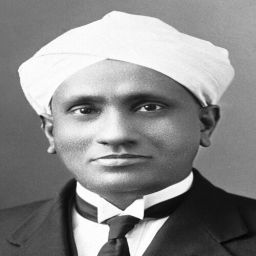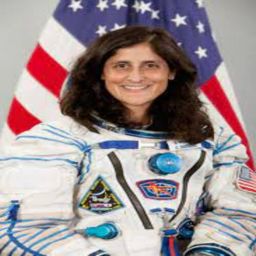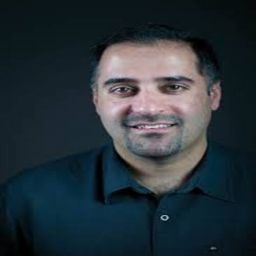Want to know about the Famous Indian Scientists Names? Well you have landed on the right article.
Scientists plan a crucial role not only in making valuable decisions for the society, but also advises policymakers and other stakeholders to create a better world of the living.
They work towards a human-centered society and use their scientific knowledge and joint research for the betterment of the nation as a whole.
From designing fancy gadgets to the technologies, to new innovations, we can’t live without all these, which surely is a gift of science and technology.
But how many of us know that behind these scientific innovations, there’s the minds of great Indian scientists. Toady let’s talk about the renowned scientists who achieved global recognition and help country.
Also Read: list of 10 sikh gurus names in order, top 10 eamcet engineering colleges in hyderabad & top life insurance companies in india
Indian Scientists Names
Here, we have provided list of famous Indian Scientists and their inventions. Must check.
1. CV Raman

Born in Tiruchirapalli on November 7, 1888, Chandrasekhara Venkata Raman (CV Raman) was a great scientist known till today for his remarkable contribution to society.
He won the Nobel Prize for Physics in 1930 for his pioneering work on the distribution of light. He also received Bharat Ratna in 1954.
He was the first Asian and first non-White to be nominated for a Nobel Prize in the sciences. Being a renowned Indian physicist, he was known for his work in light scattering. He is one of the famous scientists of India.
In 1902, Raman enrolled at Presidency College in Madras to obtain a B.A. degree from the University of Madras.CV Raman worked on the acoustics of musical instruments, and he investigated the harmonic nature of the sound of the Indian drums like tabla and the mridangam.
The scientist died of natural causes on 21 November 1970.
Details
2. Homi J. Bhabha

Homi J. Bhabha born on October 30, 1909 (Mumbai), was an Indian nuclear physicist, professor of physics, and founding director at the Tata Institute of Fundamental Research.
Homi J. Bhabha attended the Royal Institute of Science in 1927 before joining Caius College of Cambridge University.
He was a great scientist who played an important role in the Quantum Theory. He was the first person to be named as the Chairman of the Atomic Energy Commission of India.
He started his scientific career in nuclear physics in Great Britain and after returning to India, he worked on his ambitious nuclear program.
Homi J. Bhabha is acknowledged as the father of Indian nuclear power for his efforts in India’s nuclear program. He was awarded the Adams Prize in 1942 and Padma Bhushan in 1954. He is one of the great scientists of India.
Details
3. Visvesvaraya

Born on 15 September 1860, Sir Mokshagundam Visvesvaraya was a renowned Indian engineer, scholar, statesman, and the Diwan of Mysore from 1912 to 1918.
He received the Indian Republic’s highest honor- the Bharat Ratna. He invented ‘automatic sluice gates’ and ‘block irrigation system’ that at present as well are considered great innovations in engineering.
Visvesvaraya started his primary education in Bangalore, obtained a BSc degree from the University of Madras, and then a Diploma in Civil Engineering from the University of Bombay.
Each year, the country celebrates the birthday of Visvesvaraya on 15 September as the Engineer’s Day in India. He was awarded Bharat Ratna (1955).
Details
4. Venkatraman Radhakrishnan

Born on May 18, 1929, Venkatraman Radhakrishnan was a globally renowned space scientist and a member of the Royal Swedish Academy of Sciences.
Radhakrishnan completed his graduation from Mysore University before joining the Department of Physics at the Indian Institute of Science, Bangalore.
Venkatraman was a popular Astrophysicist worldwide and also known for his design and fabrication of ultralight aircraft and sailboats.
His observations and theoretical insights helped the community in solving several mysteries surrounding pulsars, interstellar clouds, and galaxy structures, among many other celestial bodies.
Details
5. S. Chandrashekar

Born on October 19, 1910, in Lahore, Subrahmanyan Chandrasekhar (S Chandrashekhar) received the 1983 Nobel Prize for Physics for his commendable mathematical theory of black holes.
The scientist was the nephew of CV Raman and became a United States citizen in 1953.
S. Chandrashekar attended the Hindu High School, Triplicane, Madras from 1922–25 and later studied at Presidency College, Madras from 1925 to 1930, writing his first paper.
Some of the works of S. Chandrashekar include the radiation of energy from stars, particularly white dwarf stars, which are the dying fragments of stars.
Some of the awards received by S. Chandrashekhar include the Adams Prize (1948); Nobel Prize in Physics (1983); National Medal of Science (1966), etc. The scientist died on August 21, 1995, at 82 in Chicago.
Details
6. Satyendra Nath Bose

Born on January 1, 1894, in Calcutta, SN Bose was a famous Indian physicist specializing in quantum mechanics.
He is known for his work on quantum mechanics and in developing the foundation for Bose statistics and the theory of the Bose condensate.
He is remembered for his contribution to the class of particles ‘bosons‘, which were named after him by Paul Dirac to recognize his work in the same domain.
Bose received a Bachelor of Science degree in mixed mathematics from Presidency College in 1913.
In 1937, Rabindranath Tagore dedicated his only book to Bose on science- Visva–Parichay. Also, Satyendra Nath Bose was awarded India’s second-highest civilian award, the Padma Vibhushan in 1954.
Details
7. Meghnad Saha

Born on October 6, 1893, in Dhaka, Bangladesh, Meghnad Saha’s most well-known work consists of the thermal ionization of elements, which results in the formulation of the Saha Equation.
This equation is the main tool for interpretation of the spectra of stars in astrophysics.
The scientist also invented an instrument useful for measuring the weight and pressure of solar rays. He also prepared the original plan for the Damodar Valley Project.
Saha was the chief architect of river planning in India and he also made the original plan for the Damodar Valley Project.
Details
8. Srinivasa Ramanujan

Born on December 22, 1887, in Tamil Nadu, Ramanujam was a great Indian mathematician and autodidact.
Who made significant contributions to mathematical analysis, number theory, infinite series, and continued fractions.
The state of Tamil Nadu celebrates 22 December (Ramanujan’s birthday) as ‘State IT Day’, memorializing the great man and his contributions for the society.
By the age of 14, Srinivasa Ramunujan received several merit certificates and academic awards throughout his school career.
He later completed his schooling at Town Higher Secondary School in 1904 before being awarded a Bachelor of Arts by Research degree. He received the Fellow of the Royal Society award in his scientific career.
Details
9. Jagadish Chandra Bose

Born on 30 November 1858, in West Bengal, Jagadish Chandra Bose was a man with many minds. He was a great polymath, physicist, biologist, botanist, and archaeologist.
Bose received a BA degree from the University of Cambridge and a BSc from the University College London in 1884.
He pioneered the study of radio and microwave optics, made significant achievements in the study of plants, and laid the foundation of experimental science in the Indian sub-continent.
He was the first person to use semiconductor junctions for detecting radio signals. He explained wireless communication for the first time to the world.
Another achievement of Chandra Bose was the invention of crescograph, which is useful in measuring plants’ responses to various stimuli and hypotheses. This helped the world know that plants can feel pain, understand affection, etc.
Along with being the mind behind so many inventions, he was also the early science writer. He is considered the father of Bengali science fiction.
Details
10. Vikram Sarabhai

Born on 12 August, 1919, in Ahmedabad, Vikram Sarabhai played the leading role in the setting up of the Indian Space Research Organization (ISRO).
He convinced the Indian government about the importance of a space program for a developing country like India after the launch of the Russian Sputnik.
He received the Padma Bhushan in 1966 and the Padma Vubhushan after his death in 1972. Though the world-known him as a renowned scientist.
He was also the force behind establishing of several renowned Indian institutions like the Indian Institute of Management, Ahmedabad (IIM-A), and the Nehru Foundation for Development.
Details
11. Salim Ali

Born on November 12, 1986 in Mumbai, Sálim Moizuddin Abdul Ali was anornithologist and a naturalist.
He was among the first Indians to conduct systematic bird surveys across the country and his bird books helped develop ornithology in the sub-continent.
Salim Ali was known as the Birdman of India, and was the main personality behind the establishment of the Bombay Natural History Society in 1947.
He was awarded the country’s second-highest civilian honour, the Padma Vibhushan in 1976.
Details
12. APJ Abdul Kalam

APJ Abdul Kalam born on 15 October 1931, was an Indian aerospace scientist who served the nation as the 11th president from 2002 to 2007.
Kalam spent almost four decades as a scientist and science administrator at DRDO
and ISRO and played a significant role in India's civilian space program and military missile development plans.
Post completing the schooling from the Schwartz Higher Secondary School, Kalam went on to attend Saint Joseph's College, Tiruchirappalli to obtain a graduate degree in physics in 1954.
Throughout his career, APJ Abdul Kalam was nominated for several prestigious awards including, Padma Bhushan (1981); Padma Vibhushan (1990); Bharat Ratna – Government of India (1997), to name a few.
Abdul Kalam is named the 'Missile Man of India' for his outstanding efforts in the development of ballistic missiles and the launch of vehicle technology.
Details
Indian Scientists in NASA
1. Kamlesh Lulla

Kamlesh Lulla is the director of the University Research, Collaboration, and Partnership office at NASA’s Johnson Space Center (JSC) in the US.
He is the co-author of the book ‘Wings In Orbit, which discusses the innovations made at NASA over the last 30 years.
Kamlesh Lulla was awarded the highest honor at NASA as Exceptional Achievement Medal in 2005.
2. Meyya Meyyappan

Another famous NASA scientist of Indian origin is Dr. Meyya Meyyappan, who at present is the chief scientist for Exploration Technology at NASA Ames Research Center in Moffett Field, California.
The scientist is highly expertise in nanotechnology and has written and co-written more than 225 articles in peer-reviewed journals on several subjects related to nanotechnology.
He received the IEEE Pioneer Award in Nanotechnology for his commendable contributions in the area of carbon nanotube application development.
3. Sunita L. Williams

Sunita Lyn Williams, born on September 19, 1965, is a renowned American astronaut and United States Navy officer.
She made the records for the most spacewalks. In 2012, Williams served as a flight engineer on Expedition 32 and later the commander of Expedition 33.
Williams obtained a Bachelor of Science degree in physical science from the US Naval Academy in 1987, and later a Master of Science degree in engineering management in 1995 from the Florida Institute of Technology.
Details
4. Anita Sengupta

Anita Sengupta is a renowned scientist known for her contributions to designing parachutes for the mission ‘Curiosity rover’ to Mars. She is the project manager at NASA’s jet propulsion laboratory (JPL), Greater Los Angeles.
Her main project was an ultracold quantum gas experiment which was launched into the International Space Station in the year 2016.
Details
5. Ashwin Vasavada

Ashwin R. Vasavada is another Indian who makes this list of top scientists of Indian origin at NASA. R. Vasavada is the MSL deputy project scientist at NASA's Jet Propulsion Laboratory in California.
He received the NASA Exceptional Achievement Medal in 2013 for his significant contributions. Some of the main spacecraft missions of NASA.
In which the scientist played a leading role include the Galileo Mission (Jupiter), the Cassini Mission (Saturn), Mars Polar Lander, and Mars Odyssey.
Every year, we celebrate November 10 as World Science Day for Peace and Development to talk about the importance of science in society.
The day also emphasizes the significance of scientists and their contributions to the planet. Whether it be the small tube to big gadgets, everything around us is a result of dynamic scientific inventions, based on unique and innovative ideas of bright minds.
Scientists and their investments are crucial for the world because they help people understand how the world works. Thus we must appreciate the work done by our great scientists in helping us understand the entire universe.
Hope this blog on famous Indian scientists helps you know more about some of the great scientists and their contributions in various fields.
frequently asked question
1. Who is the No 1 scientist in India?
Imran Ali of the Department of Chemistry has been selected as the number one scientist in India and 24th in the field of Analytical Chemistry by a group of scientists from the University of Stanford, USA. The list has been published in the globally renowned journal PLOS Biology.
2. Who are the five Indian scientists?
name of renowned five Indian scientists include:
· CV Raman
· Homi J Bhabha
· APJ Abdul Kalam
· Vikram Sarabhai
· Jagadish Chandra Bose
3. How many Indian scientists are there?
Presently, there is more than 1.6 lakh most cited scientists around the world, out of which 1,490 are from India. Within different fields, 26 Indian scientists are listed among the top 50 most cited scientists, while 66 are among the top 100 scientists.
Also Read: Check out my reviews of the best image editing software, the top choices for video editing software, and my full guide to start a blog for beginners.


